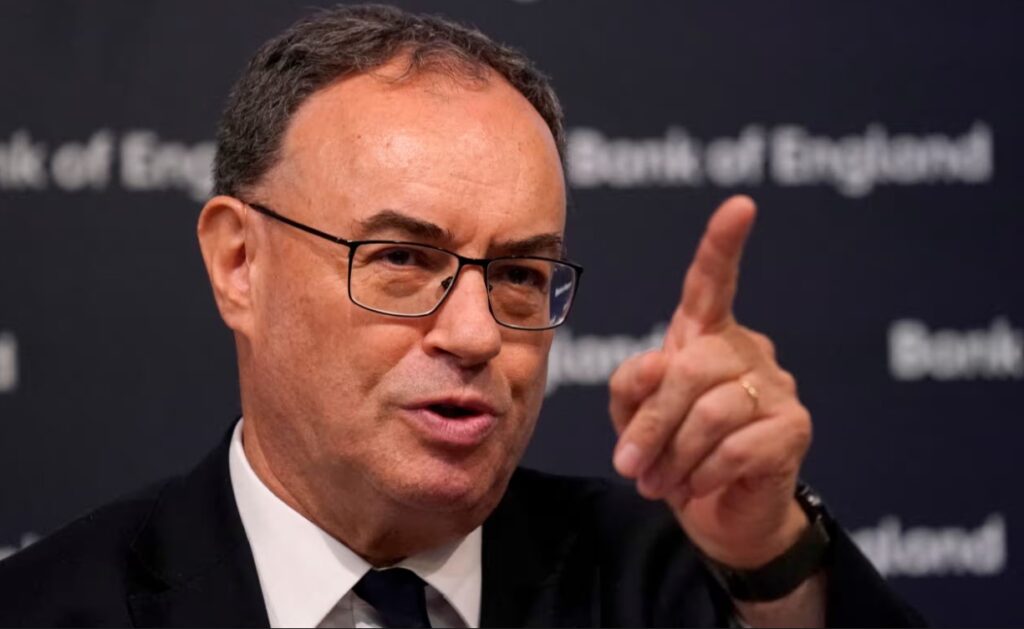Bank of England’s Andrew Bailey Hints at More Aggressive Rate Cuts: Implications for the Scottish Housing Market
As global economic uncertainty continues to cast a shadow, Bank of England (BoE) Governor Andrew Bailey has signalled that the central bank may adopt a more aggressive approach to cutting interest rates, should inflation maintain its downward trajectory. In a recent interview with The Guardian, Bailey offered a cautiously optimistic view on the UK’s monetary policy while addressing concerns surrounding geopolitical instability in the Middle East. His comments not only provide insight into the broader UK economy but also carry significant implications for Scotland’s housing market, where interest rates have a direct influence on property affordability and demand.

Shift in Stance on Interest Rates: Impacts on Scottish Homebuyers
Bailey’s latest remarks show a noticeable shift from his earlier position. Two weeks ago, he suggested gradual interest rate reductions. However, with inflation stabilising, Bailey now hints at more substantial rate cuts. This depends on inflation aligning with the BoE’s target.
For the Scottish housing market, this shift could be transformative. The BoE’s current interest rate of 5%, after a 0.25% reduction in August, pressures potential homebuyers in Scotland. This is especially true for first-time buyers and those with variable-rate mortgages. If inflation stabilises and rates are cut more aggressively, Scottish homeowners and buyers could see relief.
Money markets have already priced in a further rate cut in November. There is a 96.5% chance that the BoE will lower the rate to 4.75%. If this happens, mortgage rates across Scotland will decrease. This will make borrowing more affordable and encourage buyers back into the housing market. High borrowing costs have slowed growth in recent months.
Geopolitical Concerns and Inflation: A Watchful Eye on the Market
Bailey’s comments also come at a time when geopolitical tensions, particularly in the Middle East, are creating economic uncertainty. The ongoing conflict between Israel and Iran has raised concerns about potential disruptions to the global oil supply, which could, in turn, affect inflation. For the Scottish housing market, rising inflation — fuelled by external shocks like higher oil prices—could stall the progress of any potential rate cuts, making mortgages more expensive and limiting property market growth.
Bailey, however, expressed cautious optimism that oil prices, for now, remain stable. “From the point of view of monetary policy, it’s a big help we haven’t had to deal with a big increase in the oil price,” he said. Drawing on the lessons of the 1970s, when soaring oil prices triggered inflationary spikes, Bailey underscored the need to closely monitor geopolitical developments that could rapidly impact inflation.
For Scottish homeowners and buyers, this means that while relief might be on the horizon, it is contingent on both global and domestic factors. If oil prices were to rise sharply, it could derail the BoE’s plans to lower interest rates, potentially prolonging the period of high mortgage costs.
Global Central Banks Easing Rates: A Global Trend Felt Locally
Bailey’s remarks are set against a backdrop of global central banks easing their monetary policies. The US Federal Reserve cut its interest rates in September, marking the first reduction since July 2023. Similarly, the European Central Bank (ECB) reduced its rates in June, with a 0.25% cut bringing Eurozone rates to 3.75%.
These global trends are mirrored in the UK’s economic landscape, with potential knock-on effects for Scotland. As global rates fall, the BoE may feel additional pressure to lower rates further, aligning with other major economies. For Scottish buyers, this global easing could translate into lower mortgage rates, improving affordability and potentially driving up demand in key housing markets like Edinburgh, Glasgow, and Aberdeen.
What’s Next for Scotland’s Housing Market?
The BoE’s next Monetary Policy Committee meeting in November will be crucial for determining the direction of interest rates. If inflation continues to stabilise, as Bailey anticipates, there is a strong possibility of more aggressive rate cuts aimed at supporting economic growth. For Scotland’s housing market, these cuts could offer much-needed relief, making mortgages more affordable and reigniting buyer interest in the face of recent price slowdowns.
However, uncertainty remains, particularly with the ongoing geopolitical risks that could destabilise the broader economy and impact the BoE’s decisions. For now, Scottish homeowners, buyers, and investors will be watching closely, as the central bank weighs its options and the housing market stands on the brink of potentially lower borrowing costs.
In conclusion, Andrew Bailey’s cautious optimism signals a potential shift toward more aggressive interest rate cuts, which could have far-reaching effects on the Scottish housing market. While the prospect of lower mortgage rates is promising, the BoE remains vigilant, mindful of inflation trends and geopolitical developments that could influence its future decisions. For now, the outlook for Scotland’s housing market hinges on both local economic conditions and the broader global landscape.
At Simpson & Marwick we expect a busy end to the year as we move beyond the uncertainty of a heavily trailed Budget and continue to see with significant price competition between lenders on mortgages. Beyond Christmas we believe there will be significant increases in both transaction numbers and prices in 2025.








